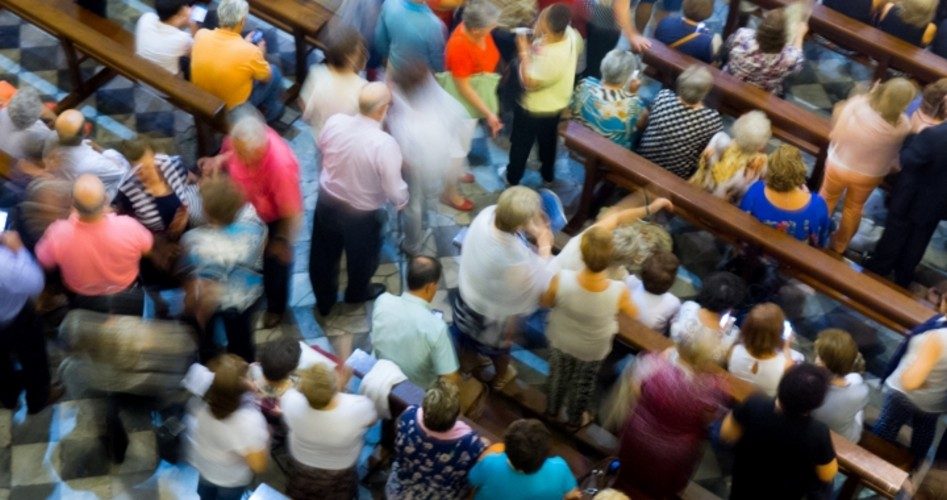
In an interview on NPR’s Here & Now earlier this week, David Kinnaman, the president of the research and polling company Barna Group, said that based on trends both before and after the COVID-19 outbreak, American churches will look a lot different after the crisis has passed, and one in five of them could close for good.
Said Kinnaman:
In the long run, I think we’ll look back at this pandemic as a fundamental change to the way Americans … attend church. You know, obviously, there’ll be a lot more online attendance than ever before, even after all churches reopen. I think the digital church is here to stay.
And I think it’s also going to really change the way people think about their donation relationship with local churches.
Barna has been tracking the thinking of church pastors on a weekly basis from before the outbreak and learned that their confidence level in surviving the pandemic has dropped considerably: “Early on it was actually over 70 percent who said they felt very confident, but now that number is 58 percent of pastors who feel very confident that their church will survive the disruption related to giving.”
Without citing numbers, Kinnaman said it is clear that upon reopening many churches are seeing “a lot fewer people” attending. He said that pastors are “seeing much smaller numbers of people showing up. So simply reopening a church doesn’t fix the underlying economic challenges that pastors might have.”
In a “State of the Plate” poll taken by the National Association of Evangelicals (NAE) in April, it was learned that a third of the 1,000 churches polled reported a decline in giving of between 10 and 20 percent, while a fifth reported a decline of 30 to 50 percent or more.
The “change” Kinnaman referred to was taking place well before the virus hit. The pandemic just accelerated it. Many believers hadn’t left the church, they just went online.
For instance, three of the largest online ministries — Global Media Outreach (GMO), the Billy Graham Evangelistic Association (GBEA), and Cru (formerly Campus Crusade for Christ) — presently account for at least 200 million Gospel presentations each year, and that number has grown enormously since the virus outbreak. GMO reported a 170-percent increase in clicks on their search engine advertisements just in the last two weeks of March. Their 12.4 million Gospel presentations in March was a 16-percent increase over the average month in 2019.
A finding by a University of Copenhagen professor revealed that Internet searches on the topic of “prayer” in 75 countries worldwide skyrocketed in March to their highest levels seen in five years.
InterVarsity USA said in April, “We’ve seen more first-time decisions to follow Jesus in the last week than at any other time in the past year.”
And the president of Thomas Nelson publishing, Michael Hyatt, told Charisma News that “people are more interested in spiritual things now than ever.… Despite what we hear through the media we should take heart. This is a moment in time that I believe is very significant and … unique.”
If Kinnaman is right, the remaining churches are likely to be stronger than before the outbreak. If he is wrong, there will be more churches than ever serving God’s people whom He is calling to Himself through the pandemic. In any event, God has always left behind a remnant, defined by Anchor Bible Dictionary as “what is left of a community after it undergoes a catastrophe.”
Image: ANNECORDON/iStock/Getty Images Plus
An Ivy League graduate and former investment advisor, Bob is a regular contributor to The New American, writing primarily on economics and politics. He can be reached at [email protected].



